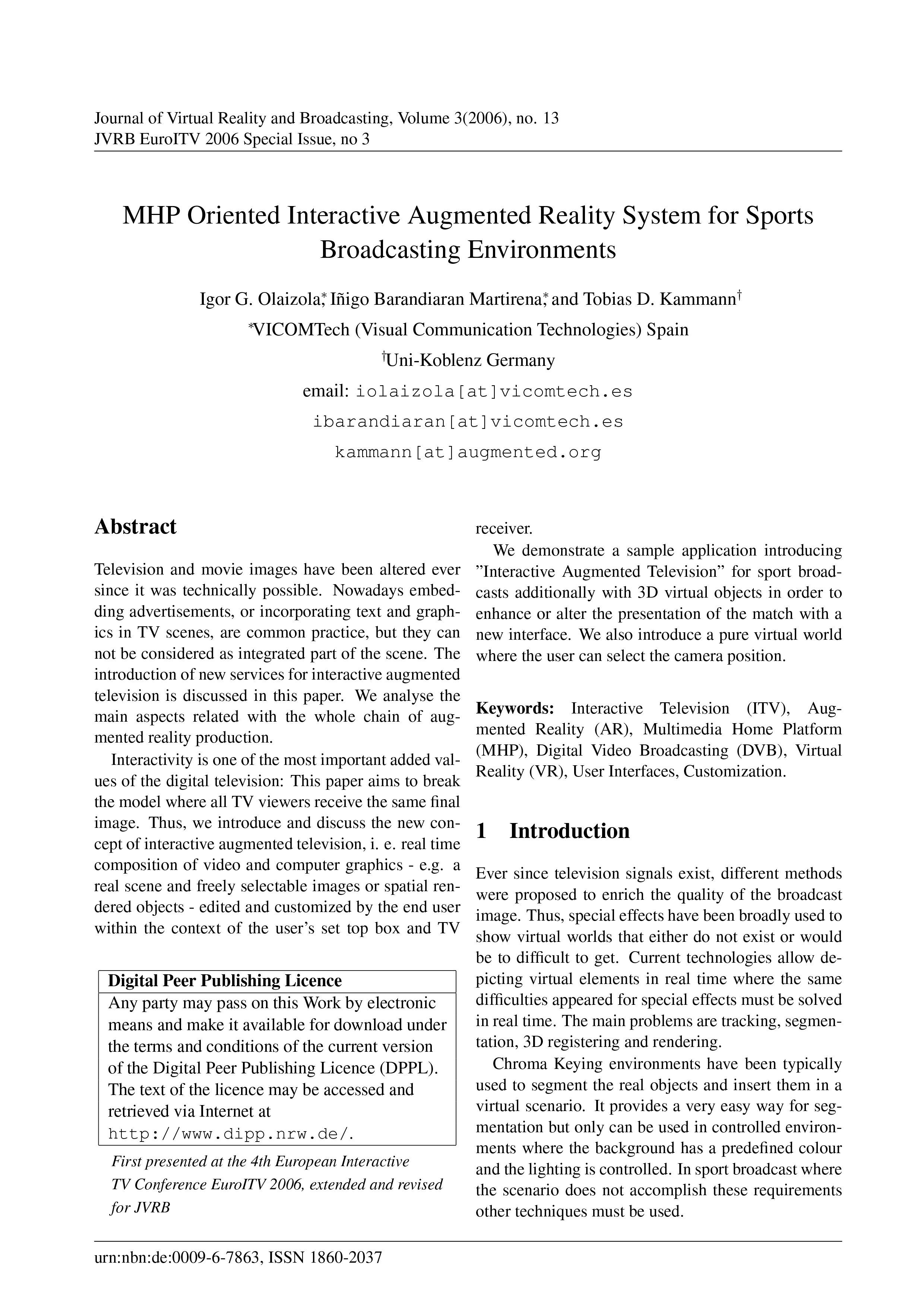MHP Oriented Interactive Augmented Reality System for Sports Broadcasting Environments
DOI:
https://doi.org/10.20385/1860-2037/3.2006.13Keywords:
Augmented Reality (AR), Customization, Digital Video Broadcasting (DVB), Interactive Television (ITV), Multimedia Home Platform (MHP), User Interfaces, Virtual Reality (VR)Abstract
Television and movie images have been altered ever since it was technically possible. Nowadays embedding advertisements, or incorporating text and graphics in TV scenes, are common practice, but they can not be considered as integrated part of the scene. The introduction of new services for interactive augmented television is discussed in this paper. We analyse the main aspects related with the whole chain of augmented reality production. Interactivity is one of the most important added values of the digital television: This paper aims to break the model where all TV viewers receive the same final image. Thus, we introduce and discuss the new concept of interactive augmented television, i. e. real time composition of video and computer graphics - e.g. a real scene and freely selectable images or spatial rendered objects - edited and customized by the end user within the context of the user's set top box and TV receiver.
Published
2006-01-03
Issue
Section
EuroITV 2006





